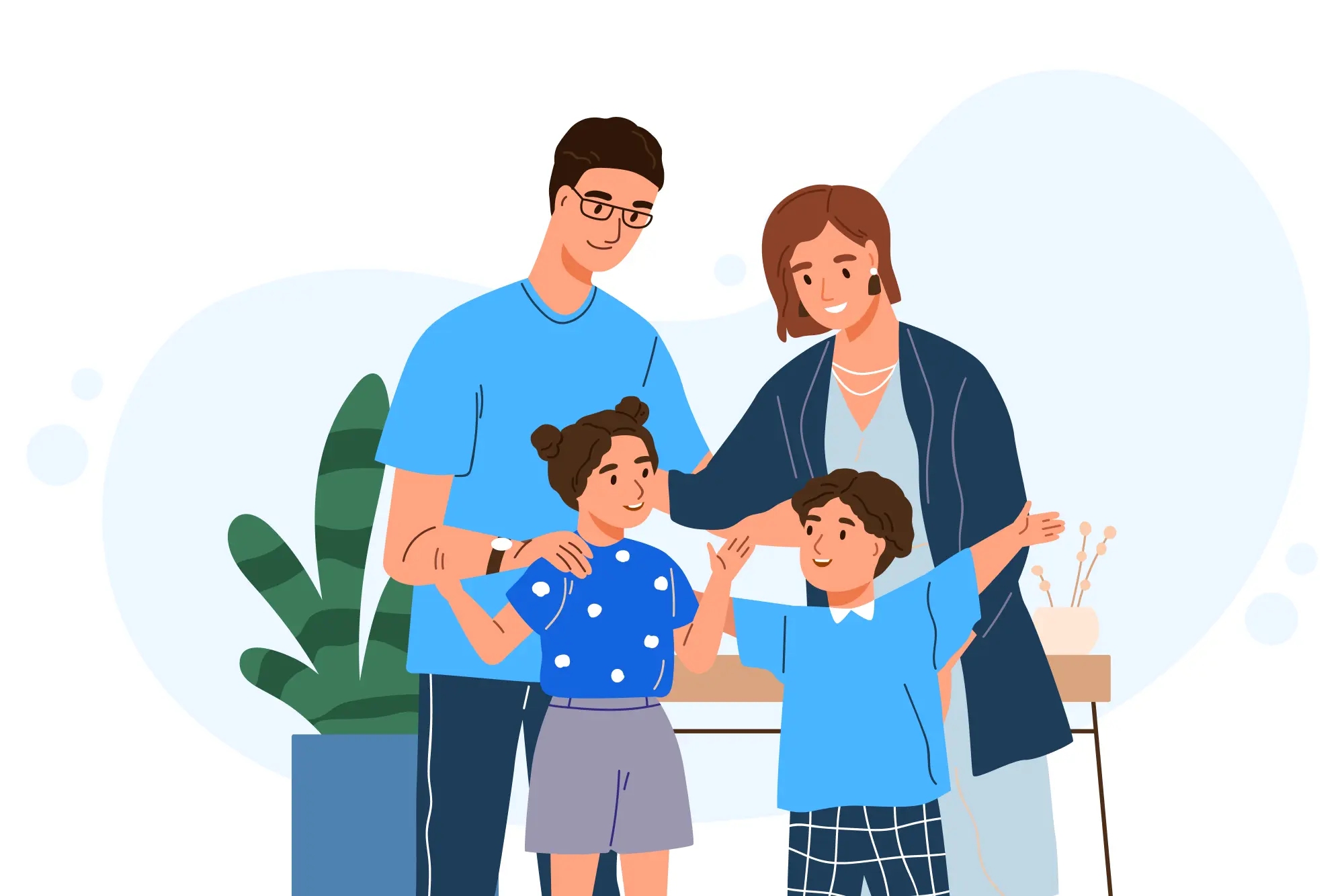No products in the basket.
Introduction:
Autism, also known as Autism spectrum disorder (ASD), is a group of conditions marked by difficulties with social skills, repetitive behaviors, speech, and nonverbal communication. Autism affects approximately 1 in 44 children in the United States today, according to the Centers for Disease Control. We know that autism has many subtypes, most of which are influenced by environmental and genetic factors. Because autism is a spectrum disorder, each person with autism has a unique set of strengths and challenges.
People with autism can learn, think, and solve problems in various ways, ranging from highly skilled to severely challenged. ASD can affect people of all sexes, races, ethnicities, and socioeconomic backgrounds. Some people with ASD may require significant help and support in their daily lives, whereas others may require less assistance and, in some cases, live entirely independently.
Autism UK is a national charity organisation in the United Kingdom that supports individuals and their families. The organisation provides a wide range of services and resources.
What Is Autism?
Autism is a lifelong, non – progressive neurological disorder that typically manifests before age three. The term “autism” refers to a developmental disability that affects verbal and nonverbal communication and social interaction. Autism is classified as a spectrum disorder. The classic form of autism is characterised by a triad of impairments in social communication, language use and limited imagination, as manifested by restricted, repetitive, and stereotyped patterns of activities. Autism was first diagnosed in 1943 by Leo Kanner, a psychiatrist at Johns Hopkins University.
Although a specific set of behaviours defines autism, children and adults can exhibit any combination of these behaviours in severity. Two children with the same diagnosis can behave and perform very differently from one another. Several factors can influence the development of autism, and sensory sensitivities frequently accompany it and medical problems, for example, gastrointestinal (GI) disorders, seizures, or sleep disorders, as well as psychological challenges such as anxiety, depression, and attention problems. Autism UK offers information and advice on various topics related to autism, including diagnosis, education, employment, and benefits.
According to the Diagnostic and Statistical Manual of Mental Disorders (DSM-5) that health care providers use to diagnose mental disorders, people with ASD often have:
Difficulty communicating and interacting with others.
Restrictive interests and behaviors.
Difficulties adapting to social situations.
Making little or infrequent eye contact.
Symptoms that affect their ability to function in school, work, and other aspects of their lives.
What Causes Autism?
Autism is a developmental disability that affects people from birth, but no one knows what causes it. The causes of the disease are still being researched. Many experts believe the behaviour pattern leading to autism may not result from a single cause. According to current evidence, it may be caused by several factors that influence brain development, including genetic and environmental factors. There is evidence that genetic factors keep a role in the development of autism. There appears to be a pattern of related disabilities in many families, lending support to the disorder’s genetic basis. While no single gene has been identified as the cause of the disease, researchers are looking for irregular segments of genetic code that autistic children may have inherited. It also appears that some kids are born with autism susceptibility, but researchers have yet to identify a single “trigger” that causes autism to develop.
Autism is most likely caused by a combination of genes rather than a single gene. The interaction of genes and their interaction with environmental factors complicate determining gene involvement. This means that genetic testing to diagnose autism or to predict who will develop an autistic spectrum disorder is currently unavailable.
Other researchers are looking into the possibility that, in certain circumstances, a cluster of unstable genes may interfere with brain development, resulting in autism. Other researchers are looking into problems during pregnancy or delivery, as well as environmental factors such as viral infections, metabolic imbalances, and chemical exposure.
Autism is more common in people with certain medical conditions, such as Fragile X syndrome, tuberous sclerosis, congenital rubella syndrome, and untreated phenylketonuria (PKU).
Do environmental factors cause autism?
There is some evidence of a link between air pollution exposure during pregnancy or early childhood and the development of autism. However, researchers are still working to understand this relationship. Because so many variables are at play, it’s difficult to isolate the link between autism and any single environmental factor.
Do vaccines cause autism?
No. There is no link between vaccines and autism. Vaccines are effective tools doctors and parents use to protect their children from potentially fatal illnesses.
What is causing the rates of autism to increase?
Autism has become more common in recent decades. Research shows this increase is not due to genetic and environmental changes contributing to the condition. The rising prevalence is more likely due to changes in diagnostic criteria and increased awareness of autism and its symptoms.
Common Signs of Autism?
People with ASD have difficulty with social communication and interaction, as well as limited interests and repetitive behaviors. The list below includes some examples of common behaviours in people with ASD. Many children with autism spectrum disorder (ASD) exhibit developmental differences as infants, particularly in their social and language skills. Less obvious differences in the development of body gestures, pretend play, and social language often goes unnoticed because they usually sit, crawl, and walk on time. Autism UK conducts and supports research on autism to improve understanding and support for individuals.
Signs of autism in children:
Common signs of autism in children include:
Becoming agitated if they do not like a particular taste, smell, or sound.
Avoiding eye contact.
Not responding to their name.
Not engaging in as much pretend play.
Not as animated as other children.
repetitive movements, such as flapping their hands, flicking their fingers, or rocking their bodies.
Becoming upset if you ask them to do something.
Liking a strict daily routine and becoming easily irritated if it is disturbed.
Taking things literally not understand phrases like “break a leg,” for example.
Some autism symptoms can be hidden by mimicking how other children behave and play.
Appear to cope better with social situations.
Signs of autism in adults:
Common signs of autism in adults include:
Noticing small details, patterns, smells, or sounds that others do not.
Not understanding social “rules”, such as not talking over people.
Be quieter and hide their feelings.
Appear to cope better with social situations.
Show fewer signs of repetitive behaviours.
Having a very keen interest in certain subjects or activities.
Finding it difficult to understand what others are thinking or feeling.
Getting very anxious about social situations.
Having the same daily routine and getting very anxious if it changes.
Getting too close to other people or getting very upset if someone touches or gets too close to you.
Sleep issues and irritability are also common in people with ASD.
In the United Kingdom, autism is typically diagnosed by a multidisciplinary team that includes a paediatrician, a psychologist, and a speech and language therapist.
In the United Kingdom, there is no specific “test” for diagnosing autism in females. The diagnostic process for autism is the same for males and females and is based on the criteria outlined in the Statistical Manual of Mental Disorders (DSM-5) or the International Classification of Diseases (ICD-10). These criteria include persistent social communication and interaction difficulties and restrictive, repetitive behaviour patterns, interests, or activities.
What Are the Treatments for Autism?
Even if your child has not been officially diagnosed with autism spectrum disorder, they may benefit from certain treatments. Individuals with Disabilities Education Act (IDEA) makes these treatments available to children under three at risk of developmental problems. Their unique needs determine the type of treatment your child receives for autism spectrum disorder. Because ASD is a spectrum disorder (some children have mild symptoms while others have severe symptoms), and each child with it is unique, numerous treatments are available.
They may include various therapies to improve speech and behavior, as well as medications to help manage any medical conditions associated with autism. The treatments your child will benefit the most from are determined by their situation and needs, but the goal is the same: to reduce their symptoms and improve their learning and development.
Medication
There is currently no medication that can cure autism spectrum disorder (ASD) or all its symptoms. However, some medications can help treat specific ASD symptoms, particularly certain behaviours. A doctor may prescribe medication to treat specific symptoms. A person with ASD may have fewer issues with:
Irritability,
Aggression
Repetitive behaviour
Hyperactivity
Attention problems
Anxiety and depression.
Healthcare providers frequently use medication to treat a specific behaviour, such as reducing self-injury or aggression. Minimizing a symptom allows the autistic person to focus on other things, such as learning and communication. According to research, medication works best when combined with behavioral therapies. Some antipsychotic drugs, such as risperidone and aripiprazole, have been approved by the FDA (Food and Drug Administration) for treating irritability associated with ASD in children between certain ages. Any medications for children with ASD should be discussed with their child’s healthcare providers.
Other drugs are frequently used to help alleviate the symptoms of autism, but the FDA has not approved them for this purpose. Some medications on this list are not approved for people under 18. Please contact the FDA for more information on the medications listed below. All medications carry risks, some of which are serious. Families should work collaboratively with their children’s healthcare providers to ensure the safe use of any medication.
Selective serotonin re-uptake inhibitors (SSRIs):
SSRIs may reduce the frequency and intensity of repetitive behaviors and anxiety, irritability, tantrums, and aggressive behavior.
This class of antidepressants addresses some issues caused by chemical imbalances in the body.
Tricyclic:
These are antidepressants used to treat depression and obsessive-compulsive behaviors.
These medications appear to cause fewer minor side effects than SSRIs. They are sometimes more effective than SSRIs in treating specific people and symptoms.
Psychoactive or anti-psychotic medications:
These medications affect the brain of the person taking them. Risperidone, an anti-psychotic medication, is approved to treat irritability in autistic children aged 5 to 16.
These medications can reduce hyperactivity, stereotyped behaviors, withdrawal, and aggression in people with autism.
Stimulants:
This class of medications could also help people with autism focus and reduce hyperactivity.
Anti-anxiety drugs:
This medication can help with anxiety and panic disorders strongly associated with ASD.
Anticonvulsants:
Seizures or seizure disorders affect nearly one-third of those with autism symptoms.
These drugs treat seizures and seizure disorders such as epilepsy.
Medication Recommendations:
|
Making a Medication Plan
Typically, healthcare providers will prescribe medication on a trial basis to see if it helps. Some medications may make symptoms worse initially or take several weeks to work. Your child’s healthcare provider may need to experiment with different dosages or medication combinations to find the most effective plan. Families, caregivers, and healthcare providers must collaborate to ensure that the medication plan is secured and that all medications provide some benefit.
How does Autism affect daily life?
Autism is classified as a spectrum disorder. As a result, people have a diverse sets of needs and abilities. While those with high-functioning autism may not require as much assistance as those with other forms of autism, they may still struggle with day-to-day activities. It is a brain development disorder that affects how a person perceives and socializes with others, causing social interaction and communication difficulties. The disorder also includes limited and repetitive behavioural patterns. According to a study published earlier this year, autistic people frequently report having a lower quality of life than non-autistic people
Adults and children with High-Functioning Autism (HFA) may experience the following symptoms, which can be difficult to manage:
Having sensory overload
Inability to recognize social cues
Anxiety or mood disorders
Inadequate organization
Controlling emotions can be difficult.
Verbal communication difficulties
Sensory Problems:
Many people in the UK with autism have sensory processing disorder. This is more widely known as sensory overload. Noise, crowds, bright lights, strong tastes and smells, and being touched can all be extremely painful for someone with High-Functioning Autism (HFA). People can be extremely sensitive to their surroundings and have unusually delicate sensory systems. As a result, their senses—sight, hearing, touch, smell, and taste—can easily become overloaded. Going to restaurants, movies, and shopping malls becomes difficult. Even simple tasks like hugging or putting on socks can be difficult for someone with sensory processing issues. With the help of strategies and sensory occupational therapy, some people in the UK with autism can learn to tolerate sensory challenges better.
Social Awkwardness:
People may struggle to recognize social cues and body language. Common issues that people may face when interacting with others include:
Understanding appropriate greetings,
Knowing when to let someone else talk,
controlling the tone and volume of their voice.
For some people with Autism, social awkwardness can be a major impediment to making friends, finding work, and dating.
Anxiety and Depression:
Autism is frequently associated with anxiety, depression, and other mood disorders. People are more likely than the general population to have a mood disorder. Autistic people are affected by depression in a variety of ways. Among the symptoms are
feelings of desolation
physical symptoms, such as feeling tired.
Depression and anxiety can also lead to an increase in autism-related behaviours, such as:
obsessive behaviours
stereotyped behaviours, such as body rocking
social withdrawal
oppositional and aggressive behaviour
self-injury,
sleep disturbance
Depression has been linked to intellectual disability as well as epilepsy. Both conditions are more common in autistic people, but it is unknown whether autistic people with intellectual disabilities and epilepsy are more likely to suffer from depression. Depression increases suicidal thoughts, and we know that Autism adults are far more likely than the general population to consider suicide.
Executive Planning Issues:
Executive functioning refers to people’s abilities to organize and plan their lives. Examples are making and sticking to schedules or following a timeline to complete a long-term project. The majority of people struggle with executive functioning. This can make managing a household or dealing with minor schedule changes at school or work difficult.
Difficulty With Verbal Communication:
A child with Autism usually has no difficulty understanding language. Individual words, grammar rules, and vocabulary may come naturally to them.
However, using language to communicate can be difficult. Sarcasm, metaphors, and idioms may be difficult to understand for someone. This is referred to as “pragmatic” language. Furthermore, some people with HFA may struggle to speak when stressed or overwhelmed.
Autism is a lifelong developmental disability that affects social interaction and causes verbal and nonverbal communication difficulties. It is a spectrum disorder that varies from person to person. Some people will never be able to live independently and may need the help of family members their entire lives. Others with high-functioning autism can live independently. While many people in the UK with autism have more difficulty navigating daily life, they can still live a fulfilling and happy life with the help of their friends and family.
As more people become aware of autism, local communities will be able to better support autistic people in their daily lives.
What do you know about Dyslexia?
Dyslexia is a learning disorder that affects language. Dyslexia is a group of symptoms that cause people to struggle with various language abilities and reading. Students with dyslexia struggle with other language abilities. For example, spelling, writing, and pronunciation. Dyslexia affects people throughout their lives, but its influence varies depending on where they are.
The specific origins of dyslexia are still unknown. Although physical and brain imaging studies show changes in how a dyslexic’s brain grows and works. Most persons with dyslexia have difficulty detecting the distinct speech sounds inside a word. Understanding how letters represent those sounds is crucial for their reading difficulties.
The impact of dyslexia varies from person to person and is determined by the severity of the disorder and the quality of training or treatment. The main issue is with word recognition, reading fluency, spelling, and writing. People with dyslexia can struggle with spoken language. Even after being exposed to positive language models at home and school. They may struggle to express themselves or completely appreciate what others say.
Dyslexia is a chronic disorder. Many people with dyslexia may learn to read and write with the right help. Early detection and treatment are critical to assisting people with dyslexia in school and life. Most persons with dyslexia need the help of a teacher, tutor, or therapist who has been particularly trained in using a multimodal, organised language strategy. These persons must be taught. That utilises several senses (hearing, sight, and touching) simultaneously. Many people with dyslexia need one-on-one help to progress at their rate. Furthermore, kids with dyslexia need a lot of controlled practice and quick, corrected feedback. To improve automatic word recognition abilities.
Summary
Autism, commonly known as Autism Spectrum Disease (ASD), is a complicated developmental disorder that impairs speech, social interaction, and behavior. It is a spectrum condition, meaning symptoms and severity can vary greatly from person to person. Difficulties with social interaction and communication, repetitive behaviors or routines, and a lack of interest in usual social activities characterize autism. The precise aetiology of autism is unknown.
However, it is thought to be a mix of genetic and environmental factors. Autism in the UK has been recognized as an inability under the Equality Act 2010, and persons protect against discrimination in areas such as employment, education, and the availability of goods and services.
Is there anything we missed? We strive to make this blog post a complete overview of traffic-related issues and solutions. If you see something we overlooked, please let us know in the comments section; we appreciate your feedback.





